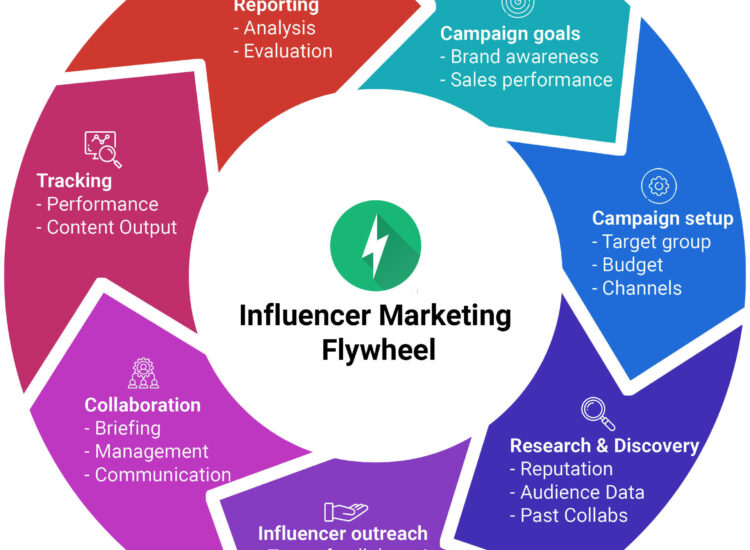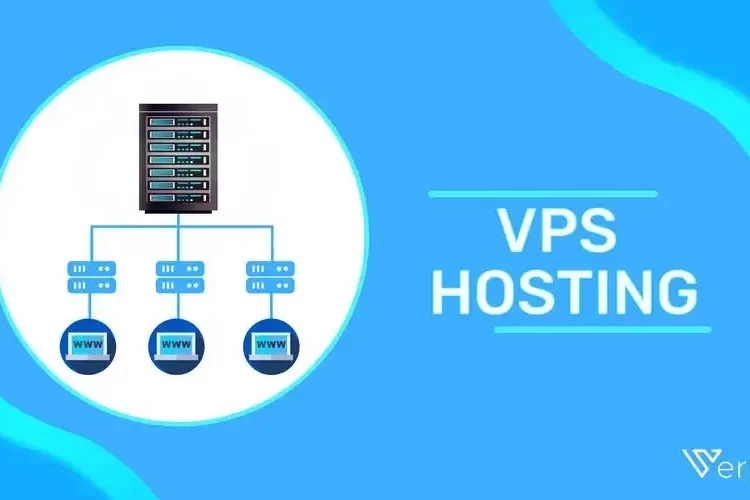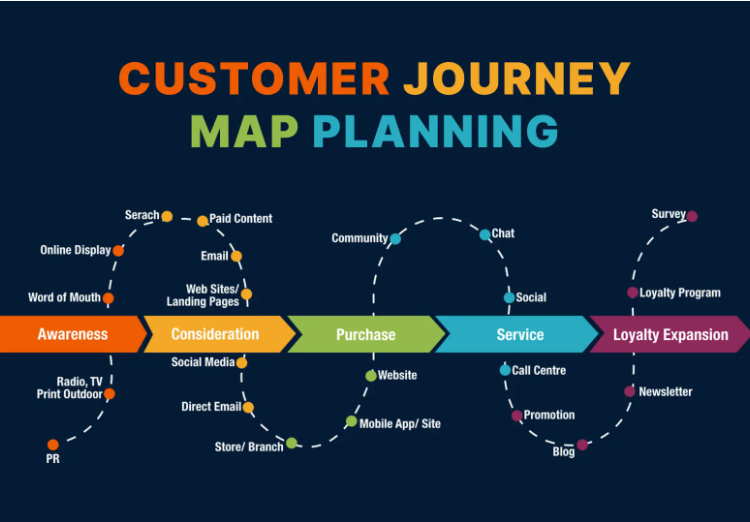In today’s saturated digital landscape, cutting through the noise to reach your target audience is more challenging than ever. Traditional advertising faces declining trust, while consumers increasingly seek recommendations from people they relate to and admire. Enter influencer marketing – a powerful approach that leverages the credibility and reach of trusted voices to connect brands with consumers authentically. However, simply throwing money at creators isn’t enough. Success hinges on developing robust, well-defined Influencer Marketing Strategies.
Toc
- 1. Why Invest in Influencer Marketing? The Power of Authentic Reach
- 2. Foundational Elements: Building Your Influencer Marketing Strategy
- 3. Core Influencer Marketing Strategies for Campaign Success
- 4. Related articles 01:
- 5. Related articles 02:
- 6. Advanced Influencer Marketing Strategies & Trends
- 7. Common Pitfalls to Avoid in Your Strategy
- 8. Strategy is the Key to Influencer Marketing Success
The world of influencer marketing is dynamic, evolving rapidly with new platforms, changing algorithms, and shifting consumer expectations. What worked last year might not yield the same results today. This comprehensive guide will delve deep into the essential Influencer Marketing Strategies you need to implement for success in 2024 and beyond. We’ll cover everything from setting clear objectives and finding the right partners to crafting compelling campaigns, measuring ROI, and navigating the legal landscape. Whether you’re a seasoned marketer refining your approach or just starting, this guide provides the blueprint for building impactful and sustainable influencer partnerships.
Why Invest in Influencer Marketing? The Power of Authentic Reach

Before diving into strategy, let’s reaffirm why influencer marketing deserves a significant place in your marketing mix:
-
Building Trust and Credibility: Influencers have cultivated relationships with their followers based on authenticity and shared interests. Recommendations from a trusted influencer often carry more weight than direct brand advertising.
-
Targeted Reach: Influencers typically cater to specific niches and demographics. Partnering with the right influencer allows you to reach your precise target audience efficiently.
-
Enhanced Engagement: Influencer content often generates higher engagement rates (likes, comments, shares) than branded content, fostering genuine conversation around your product or service.
-
Driving Conversions: From generating leads to driving direct sales (often tracked via unique codes or affiliate links), influencer marketing can significantly impact your bottom line.
-
Generating Authentic Content: Influencers are skilled content creators. Collaborations can yield high-quality, relatable User-Generated Content (UGC)-style assets that can be repurposed across other marketing channels.
-
Cost-Effectiveness: Particularly when working with micro- or nano-influencers, influencer marketing can offer a strong return on investment compared to traditional media buys.
However, these benefits are only realized through careful planning and execution – highlighting the critical need for effective Influencer Marketing Strategies.
Foundational Elements: Building Your Influencer Marketing Strategy
A successful influencer program doesn’t happen by chance. It requires a strategic framework built on clear objectives and audience understanding.
Define Clear Goals and Key Performance Indicators (KPIs)
What do you want to achieve with influencer marketing? Your goals will dictate every subsequent decision, from influencer selection to campaign measurement. Common goals include:
-
Brand Awareness: Increasing visibility and recognition among a target demographic. (KPIs: Reach, Impressions, Brand Mentions, Social Listening Sentiment)
-
Audience Engagement: Fostering interaction and conversation around your brand. (KPIs: Likes, Comments, Shares, Saves, Engagement Rate)
-
Lead Generation: Capturing potential customer information. (KPIs: Link Clicks, Landing Page Visits, Form Submissions, Cost Per Lead – CPL)
-
Sales & Conversions: Driving direct purchases or sign-ups. (KPIs: Conversion Rate, Sales Revenue, Average Order Value – AOV, Return on Ad Spend – ROAS, Usage of Discount Codes/Affiliate Links)
-
Content Generation: Sourcing authentic content for marketing use. (KPIs: Number of Assets Created, Usage Rights Secured, Content Performance when Repurposed)
-
Building Community/Trust: Establishing brand credibility and loyalty. (KPIs: Sentiment Analysis, Follower Growth on Brand Channels, Community Engagement Metrics)
Action: Define SMART (Specific, Measurable, Achievable, Relevant, Time-bound) goals for your influencer campaigns and select the corresponding KPIs you will track relentlessly.
Deeply Understand Your Target Audience
Who are you trying to reach? Your influencer strategy must be audience-centric. Go beyond basic demographics:
-
What are their interests, values, and pain points?
-
Which social media platforms do they frequent most?
-
What kind of content do they consume and trust?
-
Whose opinions do they value in your industry or niche?
Action: Develop detailed buyer personas. Analyze your existing customer data and conduct social listening to understand where your target audience spends their time online and who influences their decisions. This insight is crucial for selecting relevant influencers.
Core Influencer Marketing Strategies for Campaign Success

With your foundation laid, let’s explore the actionable strategies that form the core of effective influencer marketing.
Choosing the Right Influencers: Beyond Follower Count
This is arguably the most critical step. Selecting the wrong influencer wastes budget and can even damage your brand reputation. Consider these tiers and factors:
-
Nano-Influencers (1K-10K followers): Often have highly engaged, niche audiences and strong personal connections. Offer high authenticity and are more affordable. Excellent for hyper-targeted campaigns.
-
Micro-Influencers (10K-100K followers): Balance reach with strong engagement and niche expertise. Seen as relatable and trustworthy. A popular choice for many brands.
-
Macro-Influencers (100K-1M followers): Offer broader reach, often with higher production quality. Suitable for large awareness campaigns but can be more expensive and potentially less authentic.
-
Mega/Celebrity Influencers (1M+ followers): Massive reach, often household names. Very expensive and require careful vetting for brand alignment. Best for large-scale brand awareness pushes, but engagement rates can sometimes be lower.
Key Selection Criteria (The 3 R’s):
-
Relevance: Does the influencer’s content, niche, and audience align perfectly with your brand and target market? This is paramount. An influencer in the wrong niche, no matter how popular, won’t deliver results.
-
Reach: Does the influencer have a substantial enough following within your target demographic to meet your campaign goals? Look beyond the raw number – analyze audience demographics if possible.
-
Resonance: Does the influencer’s content generate genuine engagement (likes, meaningful comments, shares)? A high follower count with low engagement is a red flag. Look for active, authentic conversation.
Vetting Process:
-
Content Quality & Style: Does their aesthetic and tone match your brand?
-
Audience Demographics: Use tools or ask the influencer for an audience breakdown.
4. https://cungcapthietbiyte.com/mmoga-maximizing-visibility-and-reach-with-vertical-marketing-systems
-
Engagement Rate: Calculate (Total Engagements / Follower Count) * 100. Look for industry benchmarks, but prioritize genuine comments over just likes.
-
Authenticity Check: Scan for signs of fake followers or engagement pods. Review past sponsored content – does it feel forced or genuine?
-
Brand Safety: Review their past content to ensure there’s nothing controversial or off-brand.
Action: Prioritize relevance and resonance over sheer reach. Use influencer marketing platforms (e.g., Upfluence, Grin, AspireIQ) or manual research (hashtags, competitor analysis, audience surveys) to identify potential partners. Thoroughly vet each candidate.
Strategic Outreach and Negotiation
Once you’ve shortlisted influencers, approach them professionally.
-
Personalize Your Pitch: Generic DMs get ignored. Reference their specific content, explain why they are a good fit for your brand, and clearly outline the proposed collaboration.
-
Value Proposition: What’s in it for them? Compensation can include:
-
Monetary Payment: Flat fee, per-post rate, commission-based.
-
Free Product/Service: Ensure the value aligns with their effort.
-
Experiences: Event access, travel opportunities.
-
Exposure: Cross-promotion (less common for established influencers).
-
Hybrid Deals: Combination of the above.
-
-
Negotiate Terms: Be clear about deliverables, timelines, usage rights, exclusivity, and payment terms.
-
Contracts: Always use a formal contract outlining all agreed-upon terms, including FTC disclosure requirements. This protects both parties.
Action: Craft personalized outreach messages. Be prepared to negotiate fairly. Always formalize partnerships with a clear contract.
Designing Compelling Campaign Concepts

Your Influencer Marketing Strategies should outline the types of campaigns you’ll run. Common formats include:
-
Sponsored Posts: Standard posts/stories featuring your product/service.
-
Product Reviews: Honest reviews (positive or balanced) from the influencer.
-
Tutorials/How-Tos: Demonstrating how to use your product effectively.
-
Giveaways & Contests: Driving engagement and audience growth.
-
Brand Ambassadorships: Long-term partnerships for ongoing promotion.
-
Affiliate Marketing: Influencers earn a commission on sales driven through unique links/codes.
-
Account Takeovers: Influencer temporarily posts from your brand’s social media account.
-
Event Coverage: Influencers promote and report on brand events.
-
Content Series: Collaborating on a series of themed posts or videos.
Action: Choose campaign types that align with your goals and resonate with the influencer’s style and audience. Brainstorm creative concepts that allow the influencer’s personality to shine through while meeting brand objectives.
Content Collaboration: Balancing Creative Freedom and Brand Guidelines
Micromanaging influencer content often leads to inauthentic results. However, clear guidelines are necessary.
-
Creative Brief: Provide a detailed brief covering:
-
Campaign Goals & KPIs
-
Key Messages & Talking Points
-
Product Information
-
Target Audience
-
Content Format & Platform(s)
-
Mandatory Elements (hashtags, tags, links, CTAs)
-
Disclosure Requirements (e.g., #ad, #sponsored)
-
Dos and Don’ts
-
Approval Process & Timeline
-
-
Empower Creativity: Allow the influencer creative freedom within the guidelines to ensure the content feels natural to their audience. The best content integrates the product/service seamlessly into their existing style.
-
Review & Feedback: Establish a clear process for content review before it goes live, focusing on factual accuracy, messaging alignment, and disclosure compliance, rather than dictating style.
Action: Develop comprehensive creative briefs. Trust your chosen influencers and foster a collaborative relationship, encouraging authenticity.
1. https://cungcapthietbiyte.com/mmoga-maximizing-visibility-and-reach-with-vertical-marketing-systems
Ensuring Compliance and Transparency (FTC Guidelines)

Non-disclosure is a major risk, legally and reputationally. In the US, the Federal Trade Commission (FTC) requires clear and conspicuous disclosure of material connections between influencers and brands.
-
Clear Disclosure: Use unambiguous terms like #ad, #sponsored, #promotion, or the platform’s built-in branded content tools.
-
Placement: Disclosures must be easily visible and not buried in hashtags or below the “more” fold.
-
Educate Influencers: Ensure your partners understand their disclosure obligations. Include this requirement explicitly in your contract.
Action: Stay updated on FTC guidelines (or relevant regulations in your region). Mandate clear disclosure in all influencer contracts and monitor content upon publication. Transparency builds trust with consumers.
Measuring Success and Calculating ROI
Refer back to your initial goals and KPIs. Effective measurement is crucial for proving value and optimizing future Influencer Marketing Strategies.
-
Track Your KPIs: Use platform analytics, UTM parameters (for tracking website traffic from specific influencer links), unique discount codes, affiliate platform dashboards, and landing page analytics.
-
Engagement Metrics: Analyze not just the quantity but the quality of engagement. Are comments genuine? Is the sentiment positive?
-
Conversion Tracking: Implement robust tracking to attribute leads and sales directly to influencer efforts.
-
Calculate ROI:
-
Basic ROI = [(Revenue Generated – Investment) / Investment] * 100
-
Consider broader value: Earned Media Value (EMV), content asset value, brand sentiment lift.
-
-
Reporting: Regularly analyze performance data. Identify top-performing influencers, content formats, and platforms.
Action: Set up tracking mechanisms before campaigns launch. Regularly monitor performance against KPIs. Use data insights to refine your strategies and allocate budget effectively.
Nurturing Long-Term Influencer Relationships

While one-off campaigns have their place, building long-term relationships (brand ambassadorships) often yields greater benefits:
-
Deeper Authenticity: Audiences see a genuine, ongoing connection between the influencer and the brand.
-
Consistent Messaging: Reinforces brand presence over time.
-
Greater Efficiency: Reduces time spent on constant outreach and negotiation.
-
Stronger Advocacy: Influencers become true brand fans.
Action: Identify high-performing, well-aligned influencers from past campaigns and explore opportunities for longer-term partnerships. Treat influencers as valued partners, not just transactional vendors.
Advanced Influencer Marketing Strategies & Trends

As the landscape matures, consider these evolving strategies:
-
Hyper-Focus on Niche & Authenticity: Moving away from vanity metrics towards highly relevant micro- and nano-influencers with deeply engaged communities.
-
Performance-Based Deals: Increasing use of affiliate or commission structures where payment is tied directly to results (sales, leads).
-
AI in Influencer Marketing: Using AI tools for more sophisticated influencer discovery, vetting (detecting fake followers), performance prediction, and campaign analysis.
-
Employee Advocacy: Leveraging your own employees as credible internal influencers.
-
Video Dominance: Prioritizing platforms like TikTok, Instagram Reels, and YouTube Shorts for influencer collaborations.
-
Integrating Influencer Content: Repurposing influencer-generated content across paid ads, websites, email marketing, and organic social feeds for added authenticity and social proof.
Common Pitfalls to Avoid in Your Strategy

Even with the best intentions, mistakes can happen. Avoid these common pitfalls:
-
Choosing the Wrong Influencer: Prioritizing follower count over relevance and engagement.
-
Lack of Clear Goals/KPIs: Running campaigns without knowing what success looks like.
-
Inauthentic Content: Forcing overly promotional messaging that clashes with the influencer’s style.
-
Ignoring FTC Disclosures: Risking legal penalties and damaging consumer trust.
-
Poor Communication/Briefing: Leading to misunderstandings and subpar content.
-
Focusing Solely on Vanity Metrics: Ignoring deeper engagement and conversion data.
-
Not Measuring ROI: Inability to justify budget or optimize future campaigns.
-
Treating Influencers Transactionally: Failing to build respectful, mutually beneficial relationships.
Strategy is the Key to Influencer Marketing Success

Influencer marketing has evolved far beyond simply paying popular people to post about products. It’s a sophisticated marketing channel requiring careful planning, execution, and measurement. Effective Influencer Marketing Strategies are built on clear goals, deep audience understanding, meticulous influencer selection, authentic collaboration, transparent disclosure, and rigorous performance analysis.
By embracing the strategies outlined in this guide – prioritizing relevance, fostering authenticity, ensuring compliance, measuring diligently, and building strong relationships – you can move beyond random acts of influence. You can build powerful, sustainable programs that not only reach your target audience but resonate with them, build lasting trust, and ultimately drive meaningful business results. The future of marketing involves authentic connection, and well-executed Influencer Marketing Strategies are your key to unlocking that connection and achieving significant growth.











